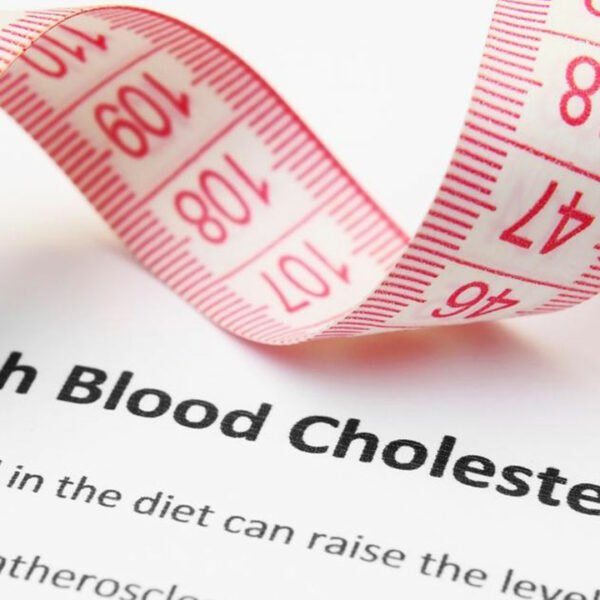Easy Steps for Cholesterol Level Diagnosis
A type of fat, cholesterol is lipid is essential for the body to function properly. However, too much cholesterol is bad for the health and can have an impact on the most vital organ of human body, the heart. Bad cholesterol often causes heart stroke and other heart-related diseases. Medical terms used by doctors to signify bad cholesterol include lipid disorder, hypercholesterolemia or hyperlipidemia. Cholesterol level diagnosis is made with a simple blood test called lipoprotein profile or fasting lipid.

Following are the four numbers that are taken into consideration while performing cholesterol level diagnosis. These are:
Total Blood or Serum Cholesterol
This takes into account the total sum of High-Density Lipoprotein and High-Density Lipoprotein cholesterol scores.It is also a good indicator of whether the patient has a risk for heart disease.
- Optimal – Less than 200 mg/dL
- Borderline high – 200-239 mg/dL
- High – 240 mg/dL or higher
High-Density Lipoprotein (HDL)
Known as good cholesterol, High-Density Lipoprotein (HDL) helps in keeping the arteries clear of blockage caused by low-density lipoprotein cholesterol. It is also known to protect people against heart disease. For this reason, higher HDL score is always good. But, if HDL falls below the marked range, it is considered that the patient is prone to suffer heart diseases.
- Low – Should be less than 40 mg/dL(men) and 50 mg/dL (women)
- Normal – 45 mg/dL + for men and 55 mg/dL + for women
- Optimal – 60 mg/dL and above lower danger of heart disease
Low-Density Lipoprotein (LDL)
High level of bad low-density lipoprotein cholesterol leads to blockage in arteries and increases chances of heart diseases. Thus, low level of bad LDL is always good to protect health.
- Optimal – Less than 100 mg/dL
- Normal/Near Optimal – 100-129 mg/dL
- Borderline High – 130-159 mg/dL
- High – 160-189 mg/dL
- Very High – 190 mg/dL and above
People suffering from metabolic syndrome or heart diseases should ensure that their LDL is lower than the optimal number recommended. Also, diabetic patients should keep their LDL in check in order to lead a healthy life.
Remember, consult a physician to know the ideal LDL levels as per family history and other health problems.
Triglycerides
A type of fat, triglycerides are found in the bloodstream. The increased amount of such type of fat often leads to heart diseases and therefore should be kept under the prescribed limit.
- Normal – Less than 150 mg/dL
- Borderline High -150-199 mg/dL
- High – 200-499 mg/dL
- Very High – 500 mg/dL and above
Causes
As discussed above, there are different types of cholesterol. These include:
- Total cholesterol –Sum of all the cholesterols
- High-Density Lipoprotein (HDL) – Good Cholesterol
- Low-Density Lipoprotein (LDL) – Bad Cholesterol
- Triglycerides
Abnormal or unhealthy cholesterol levels are due to unhealthy and sedentary lifestyle. This often includes being overweight, lack of exercise and consuming food rich in fat.
Also, there are some health conditions such as kidney disease, diabetes, polycystic ovary syndrome (PCOS), underactive thyroid gland and pregnancy that often lead to fluctuation in cholesterol level. There are some contraceptive pills, beta blockers, diuretics (water pills), and some drugs used to treat depression that raises cholesterol levels.
Here are some family or hereditary disorders that lead to abnormal cholesterol and trigger triglyceride levels.
- Familial combined hyperlipidemia
- Familial dysbetalipoproteinemia
- Familial hypercholesterolemia
- Familial hypertriglyceridemia
Prevention Tips:
Following steps should be made a part of lifestyle if you want to keep your cholesterol in check and to prevent heart diseases.
Quit smoking – Even though smoking does not directly increase cholesterol levels, it, however, reduces the percentage of good cholesterol.
Fat-free Diet – The best way to reduce chances of developing cholesterol related problems is eating foods that are low in fat. By consuming food that has low fat content reduces the risk of heart attack and stroke. Include whole grains, fruits, and vegetables in your diet and avoid foods that are loaded with saturated fat.
By incorporating these lifestyle changes, one can keep himself away from bad cholesterol. Doctors often recommend medicines if cholesterol cannot be kept under minimal level even after changing lifestyle. Medicines are prescribed by weight, age, blood pressure and other blood flow problems.
Medicines are usually prescribed if you are suffering from heart disease or diabetes; LDL cholesterol should stay below 100 mg/dL, or you are at risk for heart disease and LDL cholesterol is not below 130 mg/dL.
It is best advised to ensure that low-density lipoprotein(LDL) is lower than 160 mg/dL to 190 mg/Dl to get health benefits.
There are several types of drugs that help in lowering and controlling blood cholesterol levels. Remember, these drugs work in different ways and thus should only be taken when prescribed by a physician. For instance, Statins is a drug that helps in lowering cholesterol and are most effective at reducing risks of heart disease.





